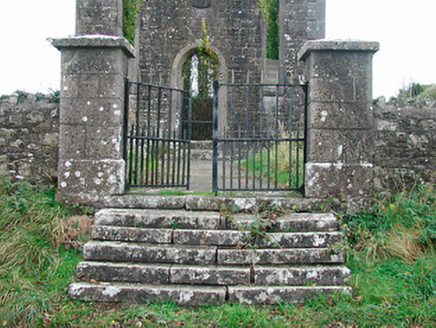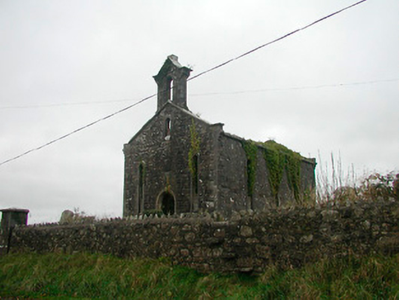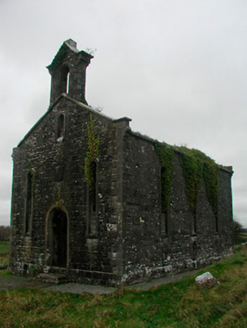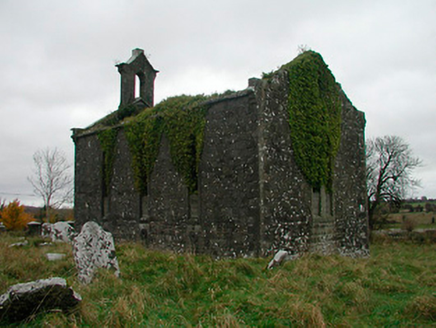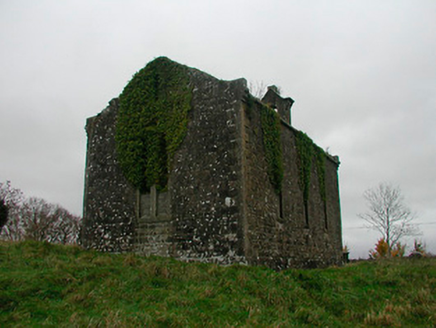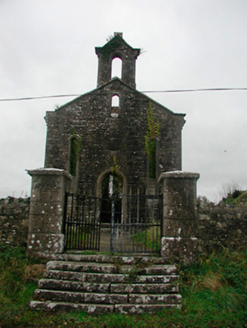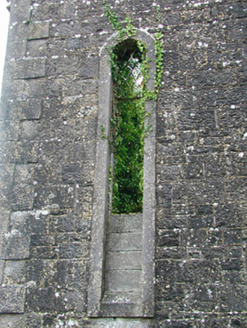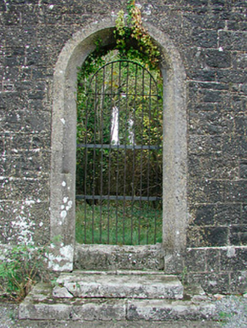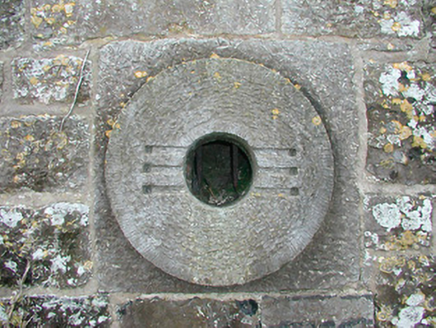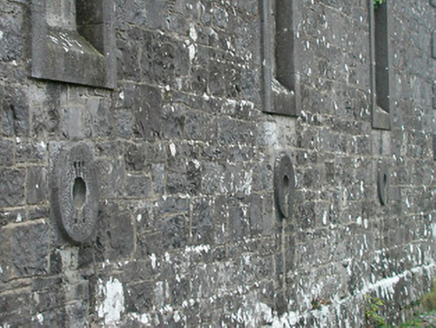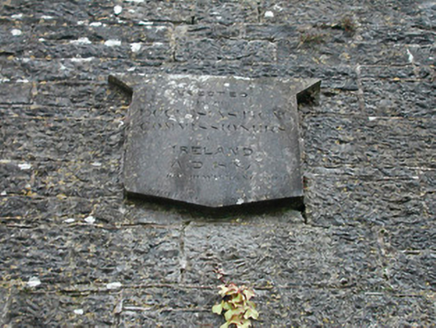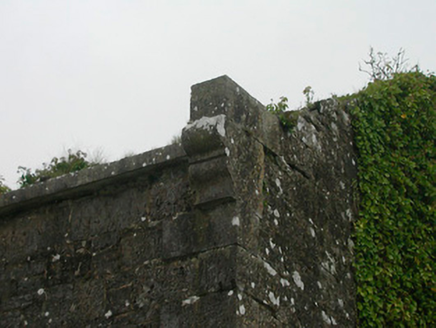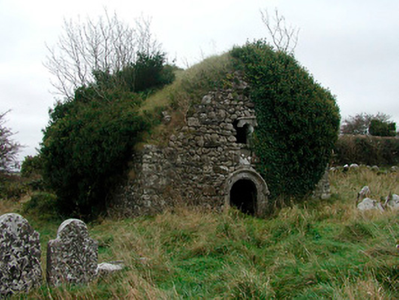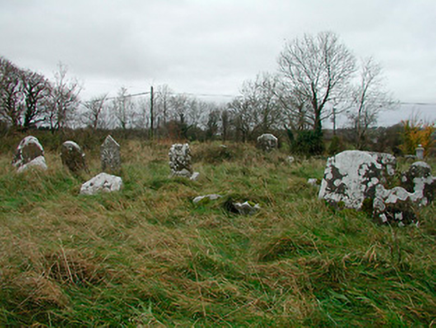Survey Data
Reg No
15402319
Rating
Regional
Categories of Special Interest
Archaeological, Architectural, Artistic, Historical, Social
Original Use
Church/chapel
Date
1830 - 1840
Coordinates
212310, 248828
Date Recorded
11/11/2004
Date Updated
--/--/--
Description
Freestanding Church of Ireland church, rebuilt c.1839 and possibly incorporating the remains of a earlier church, c.1550, comprising three-bay hall with cut stone bellcote over entrance gable (west). Now roofless and out of use. Originally had pitched natural slate roof with rasied limestone verges to either end having cut stone kneelers. Constructed of coursed limestone over dressed limestone plinth with raised dressed limestone quoins to the corners. Cut stone date plaque over main entrance reads "Erected by the Ecclesiastical Commissioners of Ireland AD 1839, Joseph Welland". Round-headed windows to sides of nave and flanking doorcase to west elevation having chamfered dressed limestone surrounds and sills. Paired round-headed windows to chancel gable (east). No window fittings now insitu. Circular dressed limestone disks, each with a circular perforation to the centre, below window openings to sides of nave (north and south elevations). Central round-headed entrance to the west gable (nave) having dressed limestone surround and wrought-iron gates. Cut stone steps to front. Set back from road in own grounds with graveyard. Rubble limestone boundary walls, a pair of dressed limestone gate piers supporting a pair of iron gates, and a flight of cut stone steps to the west. Remains of a barrel-vaulted single-cell mortuary chapel, built c.1680, lies to the southeast. Located to the west of Glassan.
Appraisal
An unusual mid nineteenth-century Church of Ireland church, which is now an attractive roofless ruin in the landscape. This simple church has a number of interesting and well-built features, including the cut stone bellcote over the entrance gable and the good quality dressings to the openings. The perforated circular disks to the north and south elevations of the nave are a curious feature that were possibly intended to act as vents. The round-headed openings are an interesting feature of this church, differing from the prevailing pointed Gothic style, which was almost the norm for church building projects in Ireland at the time. This church was built to designs by Joseph Welland, who had sole responsibility for all Church of Ireland building projects in Leinster at this time. To the rear of this church lie the remains of a late-seventeenth century mortuary chapel. The Rev. Charles Goldsmith, father of the renowned eighteenth century poet and playwright Oliver Goldsmith (1730-1774), was curate at Kilkenny West between 1730 and his death in 1747. His remains are interred in the graveyard. According to popular legend Oliver Goldsmith's career as a poet is said to have started in Kilkenny West church while his father was preaching. He noticed a rat climbing down a rope from the belfry and immediately composed the following lines: "A pious rat, for want of stairs came down a rope to say his prayers". The good quality boundary wall, gates and cut limestone steps complete the setting of this important composition.
